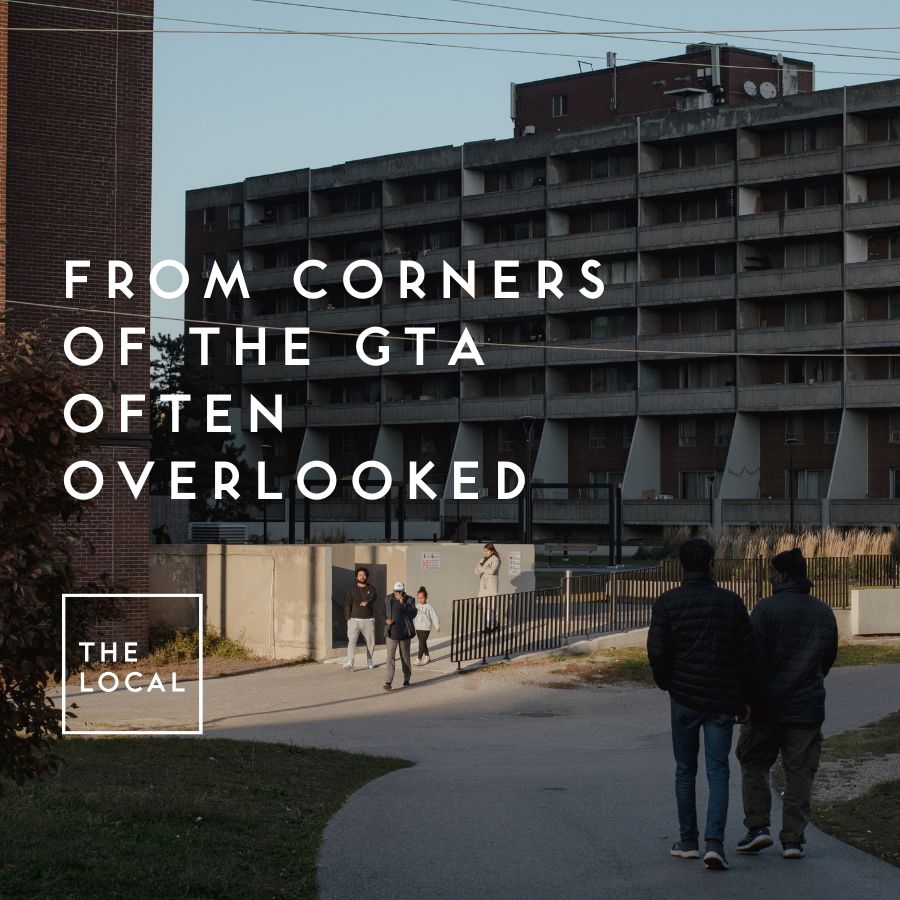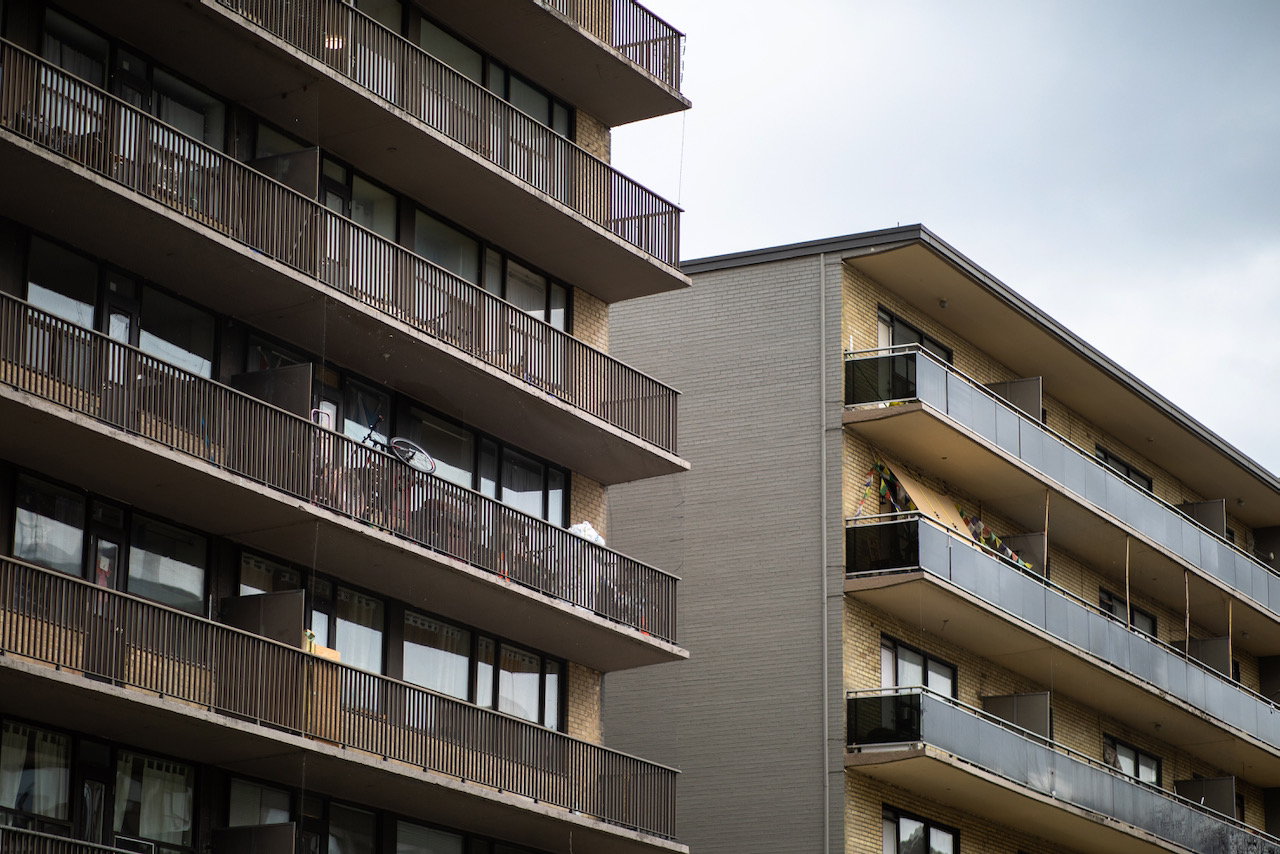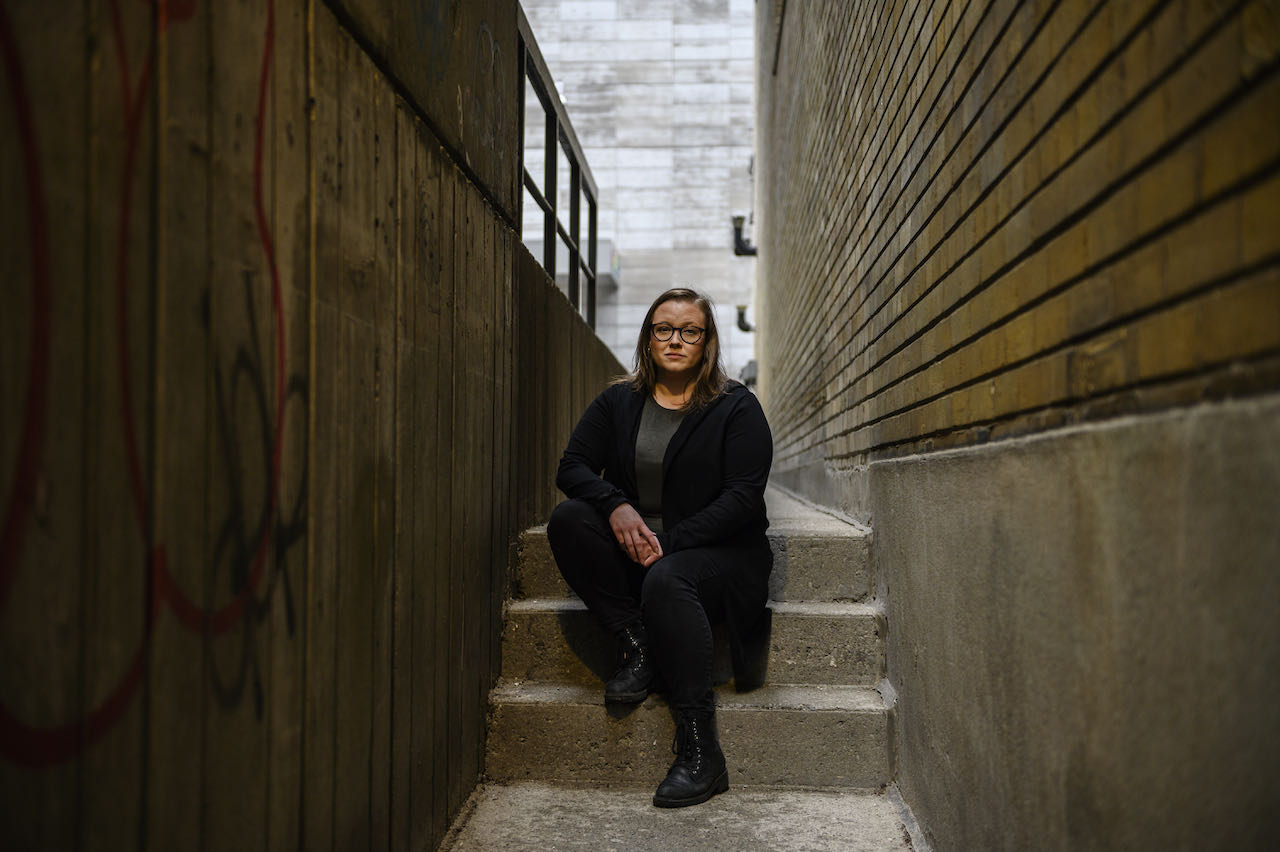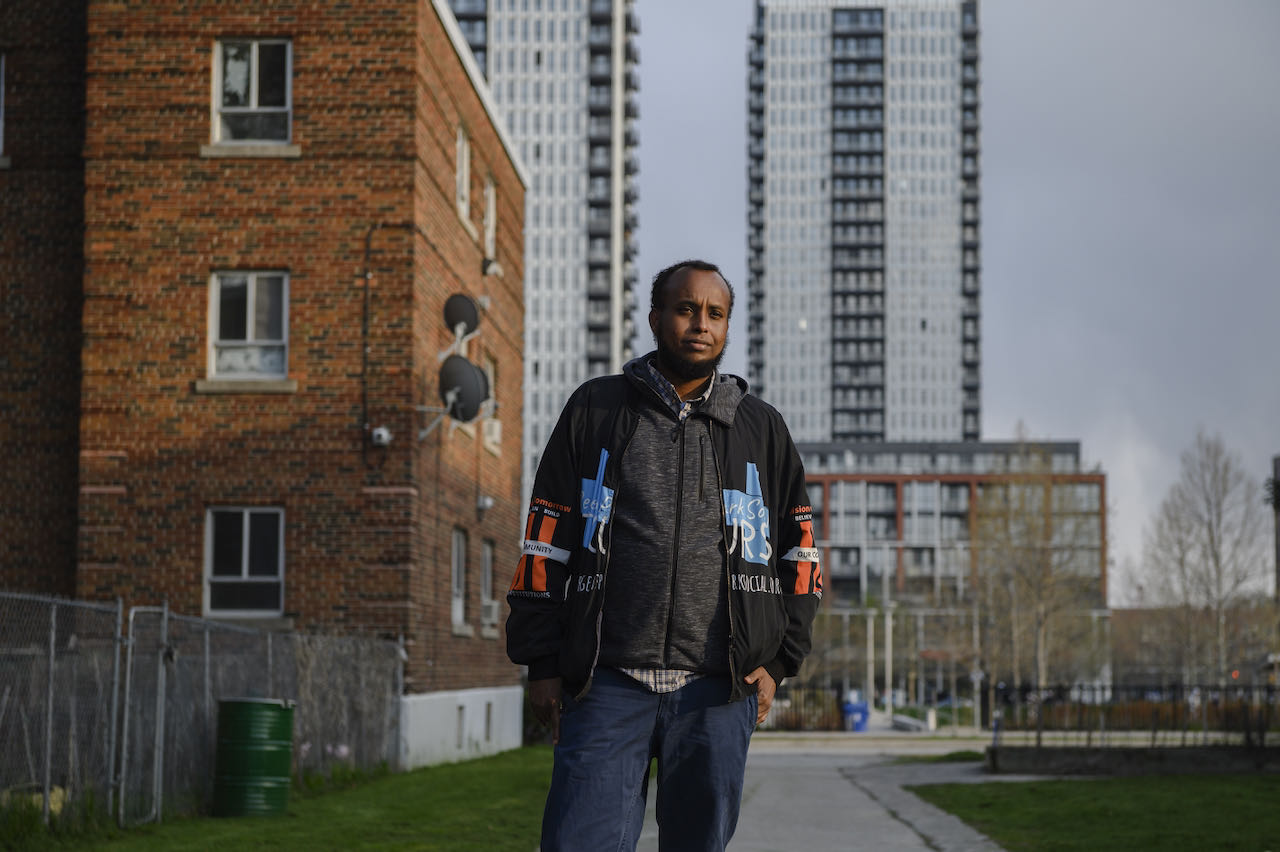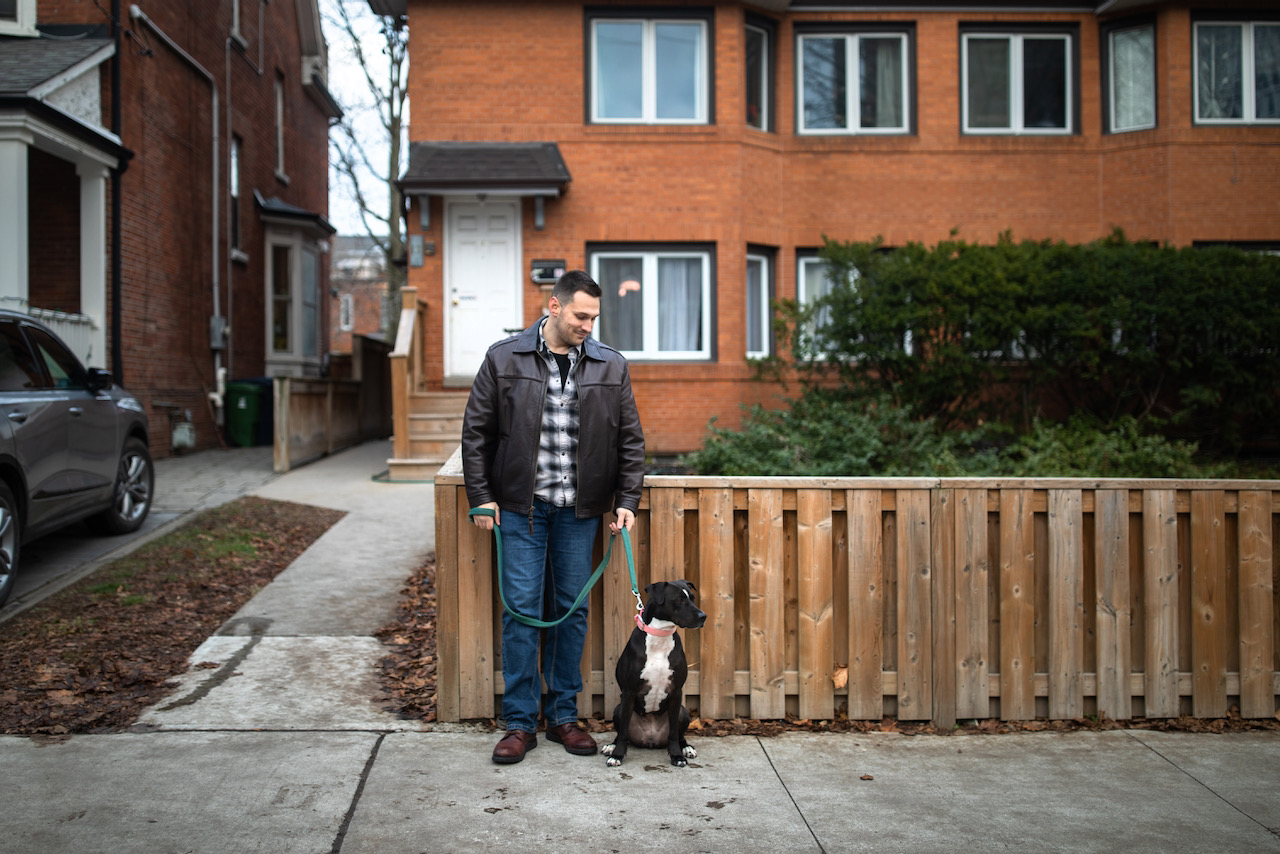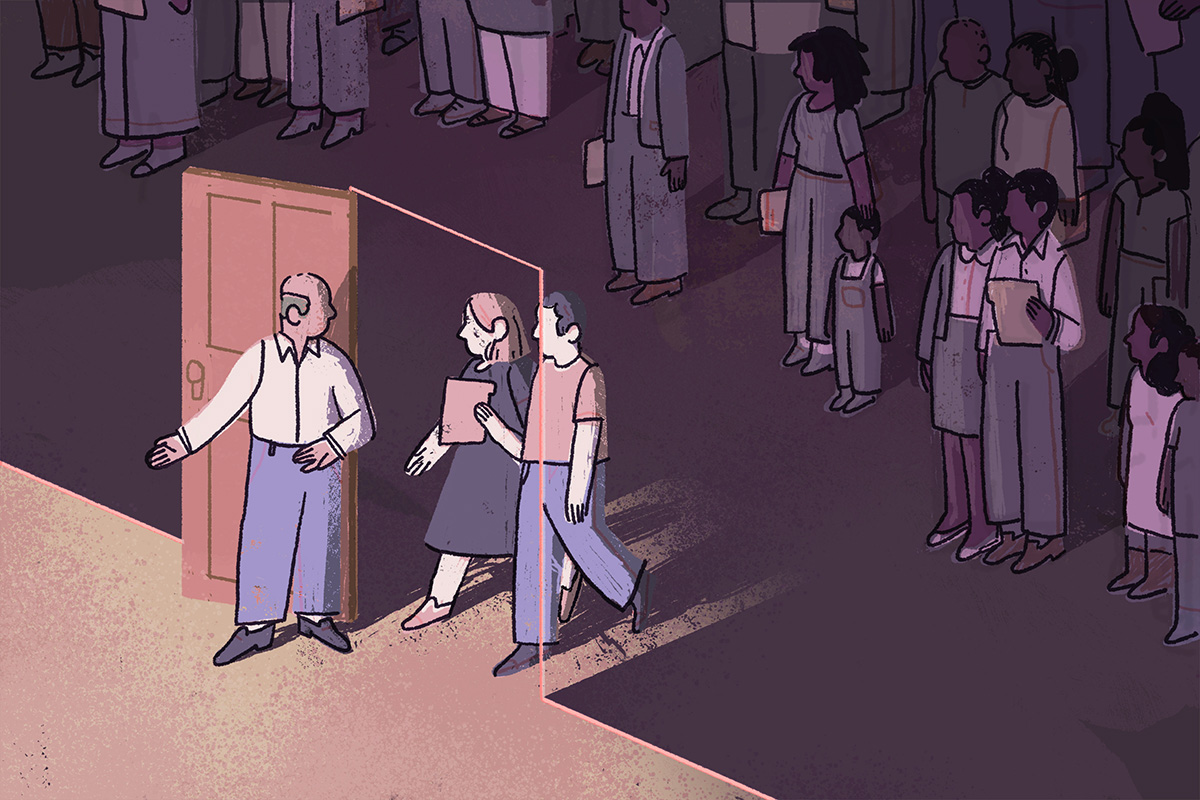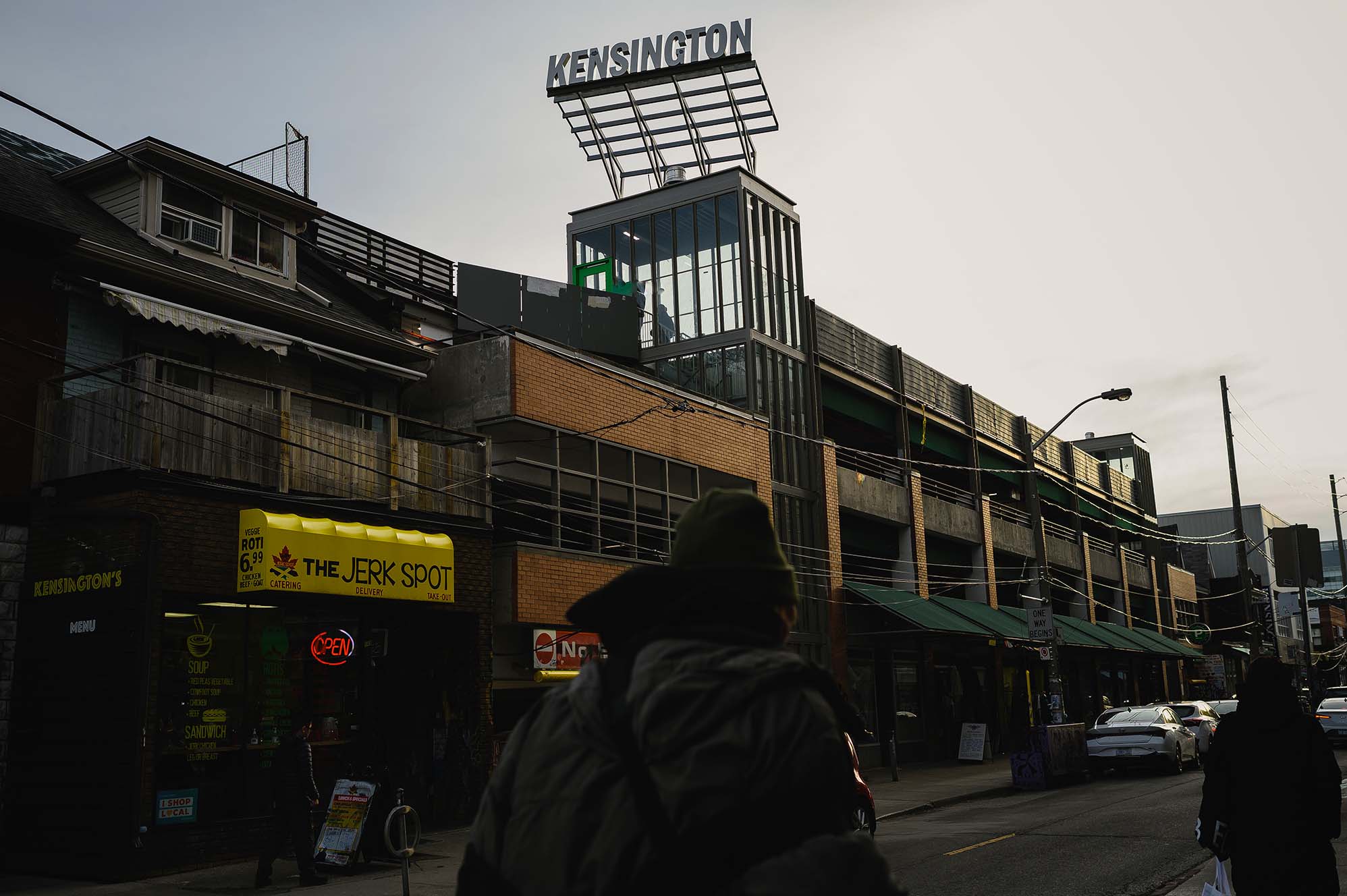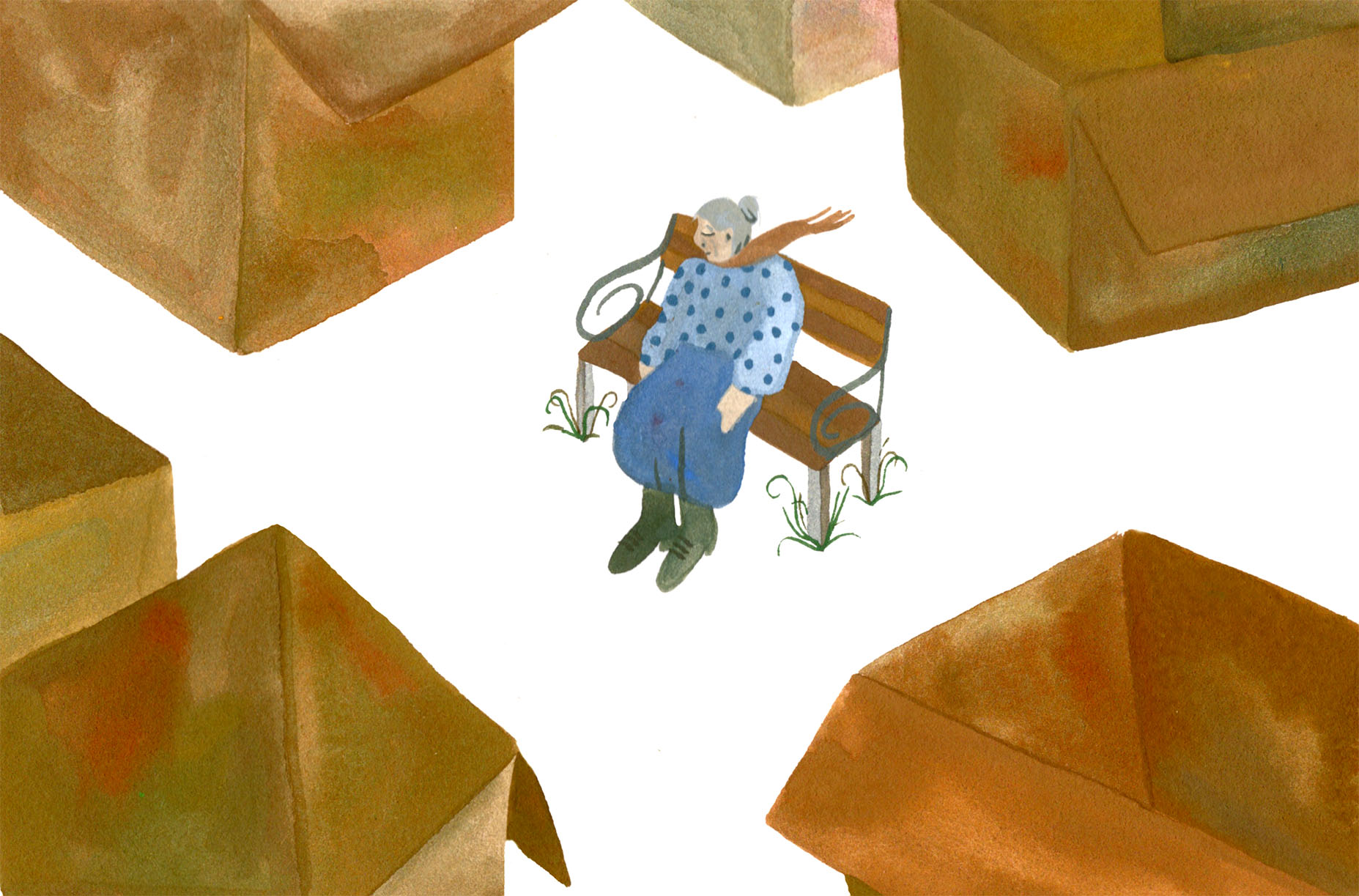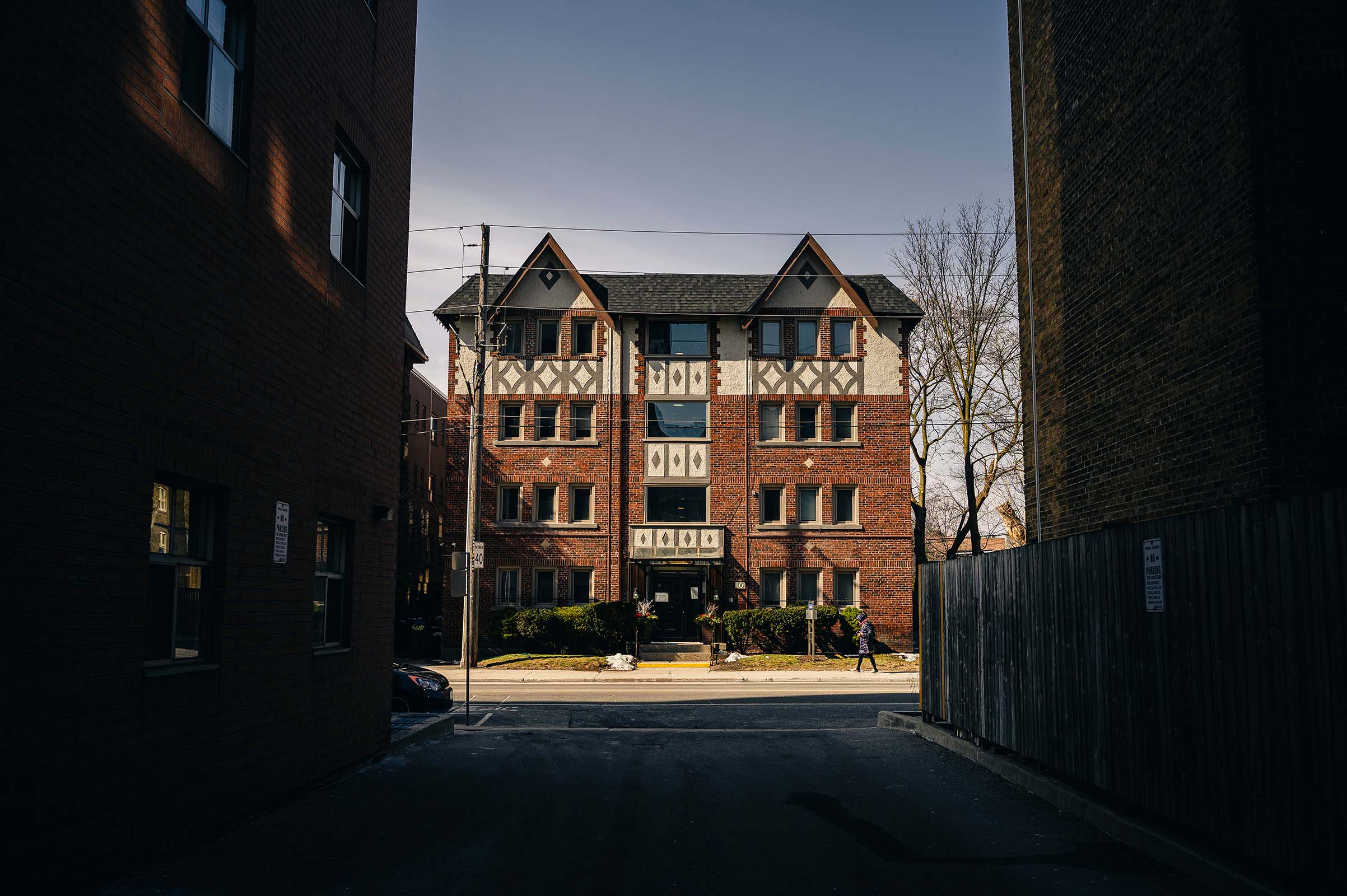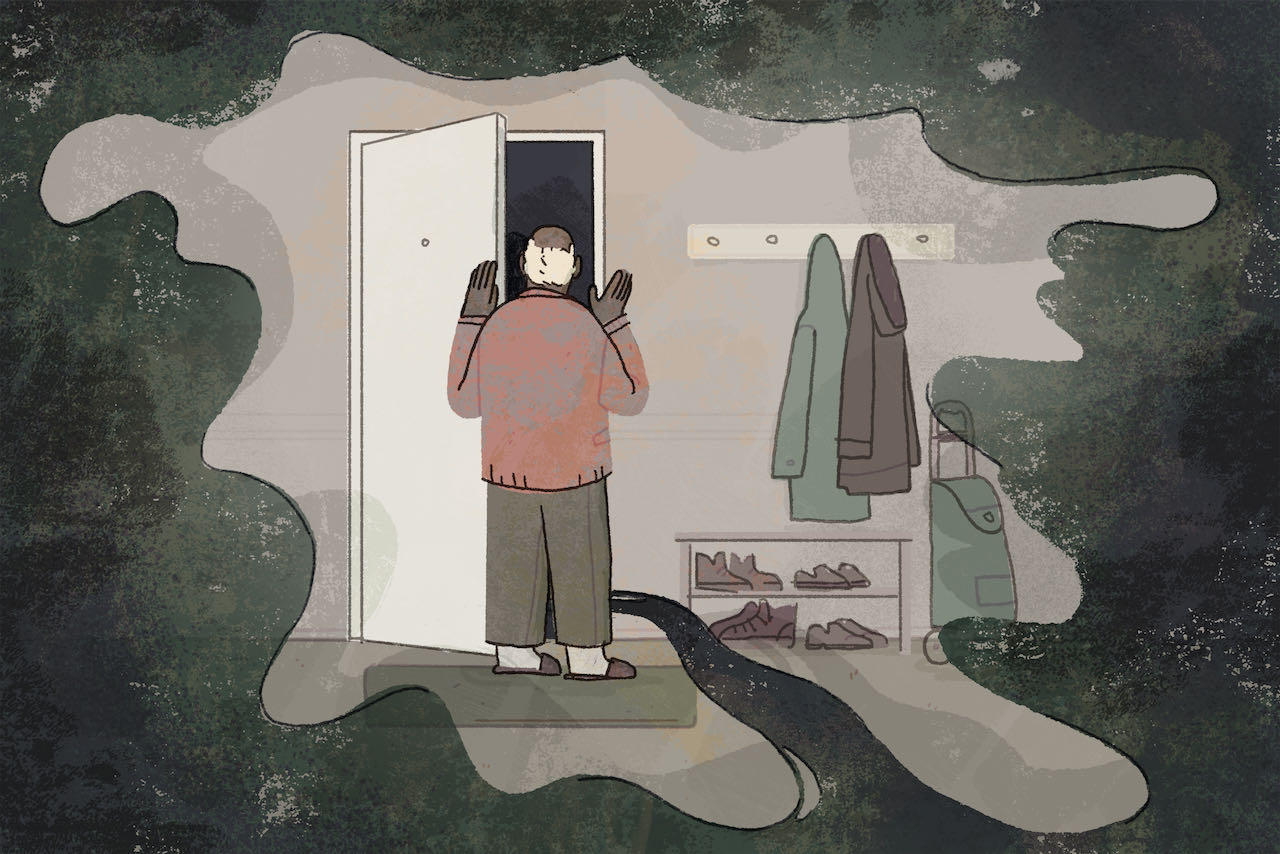
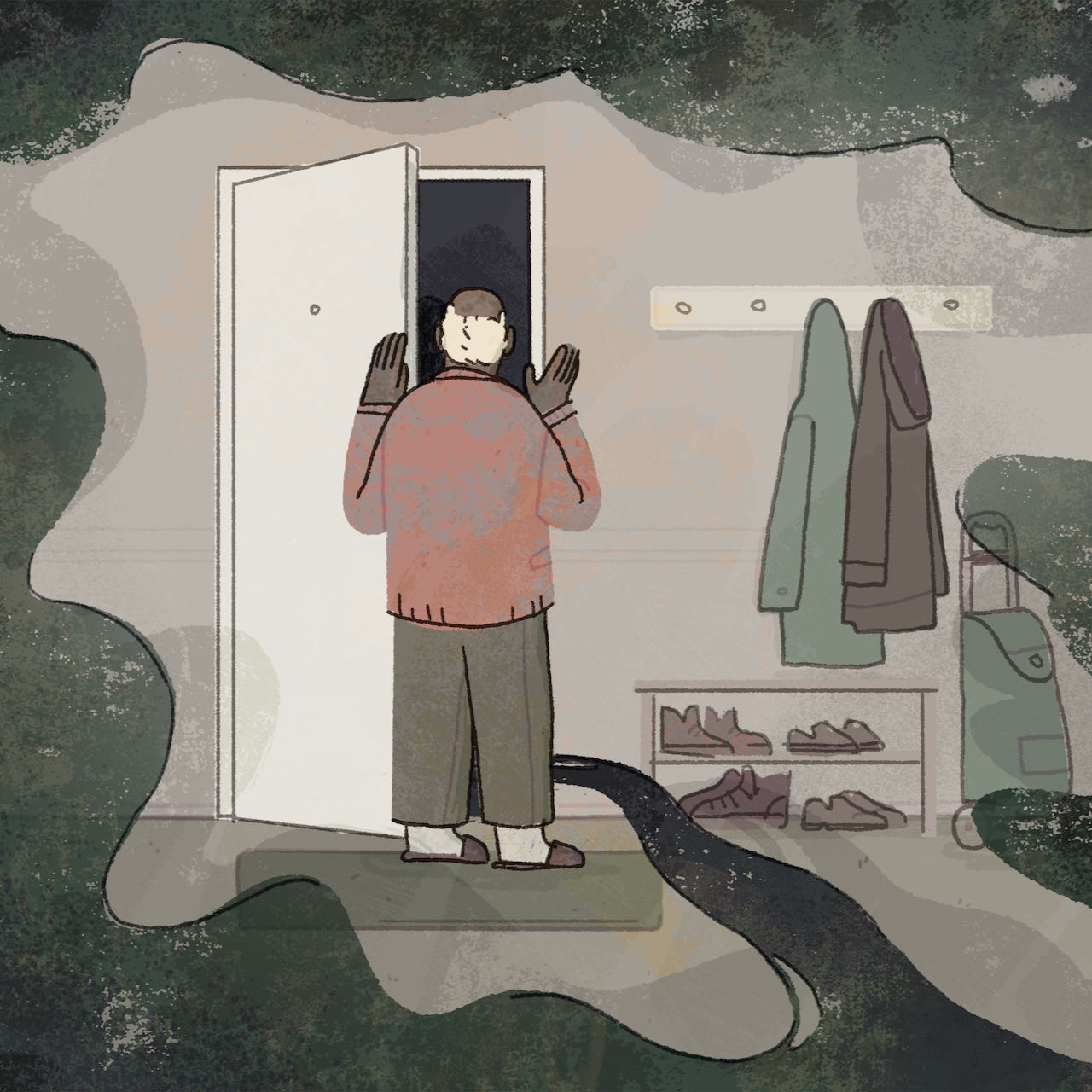
At one of the lowest points in her life, Sarah would wake up every day to find strangers in her home.
Some, she suspected, had taken the screens off the windows and crept through while she was sleeping; others had simply been invited in by the men who’d taken over her home. Many of them sold and used drugs, offering them to her in exchange for use of the house. She’d sequester herself and her young children in one room, figuring out how to regain control of a situation that had so rapidly spiralled out of control. (Sarah has been given a pseudonym to protect her identity due to ongoing precarious housing circumstances.)
It was the 1990s, and Sarah, then in her 30s, had moved to Toronto from Newfoundland to be close to SickKids hospital, where her daughter was receiving medical treatment. She’d lived at a shelter with her children at first, before moving into housing in Regent Park. What she didn’t fully realize was that her partner was experiencing addiction. “I didn’t have an addiction, and didn’t really understand it very much,” she says. “And it just started seeping in.”
The person who sold drugs to her partner started visiting the house regularly, bringing friends with him. “He had just gotten out of jail, and he was all sad,” she says. “I felt sorry for the guy.” Being from Newfoundland, Sarah half-jokes, it’s normal to go out of your way for your neighbours, to invite them in for tea.
But coming over for tea turned into much more, and before she knew it, her home was full of strangers who weren’t interested in leaving. Sarah didn’t want to call the police, because she didn’t want to be kicked out of the home and lose her kids. She’d started taking the drugs she was offered, often under coercive conditions, and she feared being thought of as a criminal, rather than a victim.
It was ultimately the shelter Sarah had previously stayed in that saved her: she still visited regularly for small services and resources, and staff noticed a change in her demeanour and got law enforcement involved. From start to finish, the ordeal was three or four months long. But Sarah’s worst fears were realized—her children were taken away from her for a time. “My life was never the same after,” she says, “[nor] my kids’ life.”
It’s been nearly thirty years since then, and there’s now an officially designated name for what Sarah went through: a housing unit takeover. These days, she runs workshops and presentations on the subject, dedicating her time to making sure as many people know about housing unit takeovers as possible, especially those most vulnerable. Because despite everything that has changed in the decades since her experience, takeovers have remained pretty much the same. Researchers estimate that thousands of people across the city experience them every year, particularly in communities that are already lower-income, precariously housed, and otherwise marginalized—from people with disabilities or mental health concerns, to the elderly, single mothers, and people experiencing addiction. But takeovers are hard to pin down. The average person, who isn’t at great risk of experiencing a takeover, generally doesn’t know they exist. Their boundaries are blurry, circumstances often fluid, starting off innocuous and turning ugly, sometimes with no clear villain. They’re the product of multiple concurrent, systemic crises—addiction, housing unaffordability, the isolation of the city’s most marginalized. And this makes them difficult to identify, and harder still to fight.
The Rent Series
An ongoing series about the barriers preventing the almost 50 percent of Torontonians who rent from making a life here.
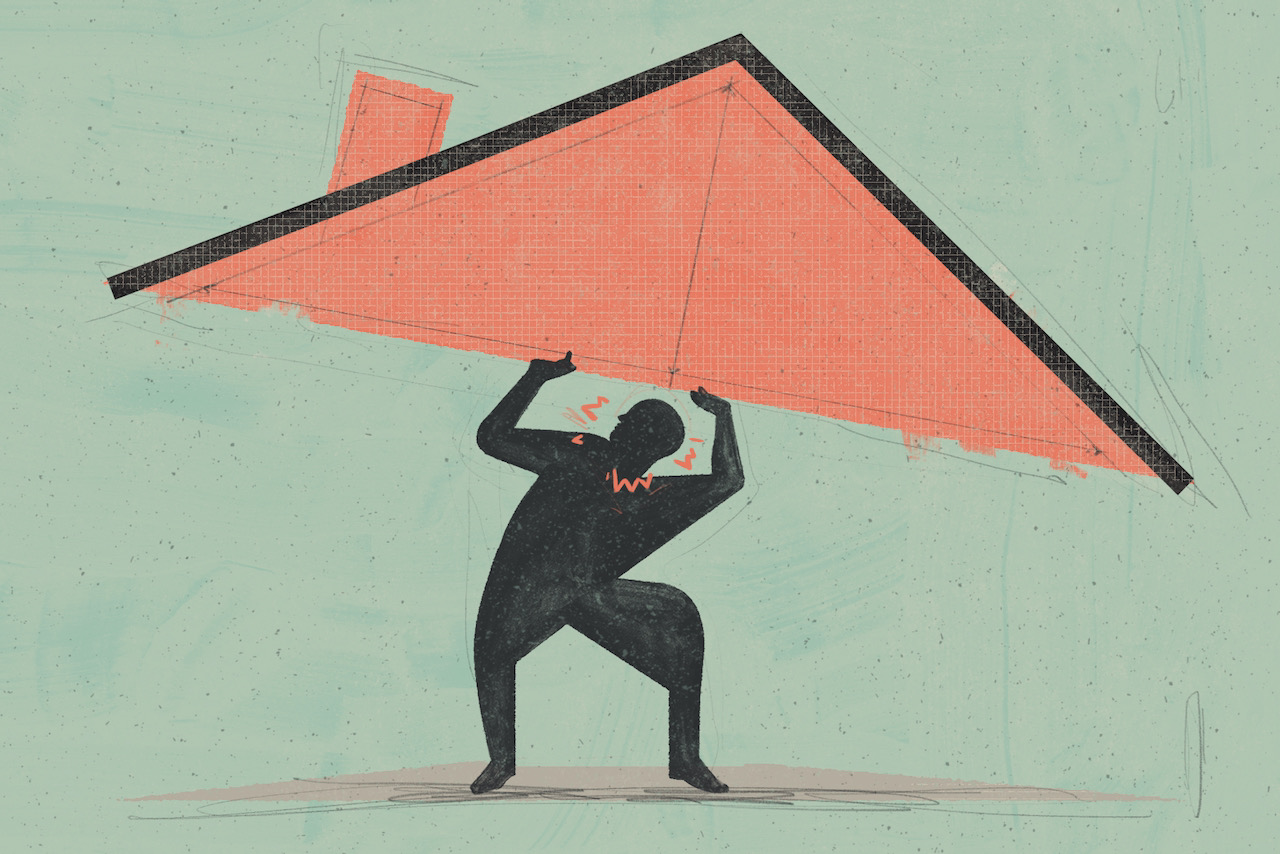
A housing unit takeover is, at its core, an event in which a tenant invites a guest into their home, only to have the guest refuse to leave, or invite more people to stay. The guest could be a friend, an acquaintance, even a family member. At first, the tenant may not realize exactly what’s going on, or how the situation will escalate. The guest begins to act in ways harmful to the tenant’s mental, emotional, physical, or even financial well-being, using coercion or manipulation to take over the home. Often, the home is then used as a base to sell and use drugs, all the while building the tenant’s dependency on substances, as was Sarah’s experience. But tenants could also be subjected to physical or domestic violence, elder abuse, threatening harm against children, regularly being asked for money, being implicated in criminal acts taking place in the home, or simply being manipulated into feeling like they’re wrong to ask the guest to leave. In some cases, the tenants become sequestered to one room of the home, and are given limited access to basic necessities, like food or bathroom access; in others, the tenant is dissuaded from leaving the house, to prevent them from reporting their experiences to outsiders. The tenant often becomes isolated and withdrawn—friends, family, or acquaintances won’t hear from them for weeks on end. To the rest of the world, they start to disappear.
Historically, there’s been very little writing or research on housing unit takeovers. It’s an obvious problem, but one that’s been thought of as a purely individual issue, with little consideration for the social and systemic factors behind it. You invited someone in, and now they’re overstaying their welcome? That’s your problem; just ask them to leave. At worst, call the police and let them handle it.
In fact, the early writing on the subject in Canada was characterized by an approach that leaned toward victim blaming. In 2013, Crime Prevention Ottawa, a municipal organization dedicated to improving community safety in the capital, released a report on home takeovers that described tenants experiencing takeovers as “complicit victims,” a perspective that could be part of the reasons tenants are hesitant to ask for help. Crime Prevention Ottawa has changed its tone in subsequent reporting.
“I would go tell the guards I need help. And they would get rid of them, kick them out, lock the door, change the locks, and see if it would work…it didn’t.”
The 2013 report was the first to specifically address takeovers in Canada, and there doesn’t appear to be significant discussion of the issue in the US. In the UK, through the 2010s, police forces and politicians began campaigns against “cuckooing,” so named because of the cuckoo bird’s parasitic hijacking of other birds’ nests, pushing out other eggs to lay her own. “Cuckooing” in the UK is closely tied to the drug trade.
Sometimes, perpetrators of housing takeovers are professionals, or affiliated with local gangs—they know exactly what they’re doing and have done it before. But in other cases, takeovers are enacted by people who are vulnerable, and see vulnerabilities in others. In Toronto, an increasingly unlivable city where the average one-bedroom apartment listing is over $2500, takeovers are also inevitably tied to the crisis of unaffordable housing.
This is particularly true in social housing. There were nearly 85,000 people on the waitlist for social housing in Toronto at the end of last year. One Toronto Community Housing manager says that when an individual finally receives housing, they’ll often invite friends who are still on the waitlist or in the shelter system to join them, and matters might escalate from there. In cases like these, both the victim and perpetrator of the takeover are in need of social supports—the victim, in re-establishing their agency and right to their space, and the perpetrator, ideally, in access to their own stable, affordable housing, and the social supports to avoid reoffending or causing further harm.
“Vulnerable people that victimize other vulnerable people—that’s the system not caring for people properly,” says Sarah. “And it puts other people at risk.”
In 2016, a community research group known as The Dream Team, comprised of people with lived experiences of mental health, substance use, and precarious housing concerns, recognized the need for more Canadian research on housing unit takeovers.
“We decided as a group that this notion of a ‘complicit victim’ needs to be reevaluated,” says Dr. Eric Weissman, now an assistant professor at the University of New Brunswick, who led the project. The team took an equity approach to the issue. The Ottawa report, Weissman says, is focused on individuals and what they can do to avoid a takeover. “Now, that’s important, individuals need to know what they can do when a takeover is in progress,” he says. “[But] it doesn’t do anything about the conditions that produce [them].”
There’s no way to tell exactly how many takeovers have taken place in a given year, but the research team found that despite the public largely being ignorant of the phenomenon, the majority of respondents in supportive or social housing recognized the concept, either through personal experience or through witnessing one in their community. Staff who work in supportive housing listed downtown Toronto as having rates of takeovers far higher than other parts of the GTA, with Scarborough and North York ranked second and third, respectively.
Perhaps most strikingly, the research found that the most commonly mentioned consequence of a takeover, reported by one in four respondents, was eviction. When paired with the fact that 45 percent of the staff interviewed said they struggled to distinguish between takeovers and “excessive partying,” it becomes clear that victims of takeovers, who should be receiving support, often instead suffer disciplinary consequences and displacement from their homes.
“Imagine that you’re a single mom living on welfare in Toronto, and you have a couple [of] babies, and you’re choosing every month between things like food and diapers,” says Weissman. “And some dealer says, ‘I’ll give you a couple hundred bucks if you let me use your apartment for a couple of hours.’ That’s not a person being complicit, that’s a person being desperate.”
One of the most difficult things for people to wrap their heads around, Weissman says, is that a lot of the people who commit unit takeovers are also victims of structural violence: poverty, precarious housing, cycles of abuse or substance use, and lack of access to support and resources. The same factors making the victims vulnerable to takeovers have often created the perpetrators in the first place.
“It’s hard sometimes to have sympathy for someone who does bad things. But they learned to do these things.”
Supportive and lower-income housing in the city is particularly vulnerable to takeovers, and Toronto Community Housing (TCH) has been making concerted efforts in recent years to address the issue. The City of Toronto addressed housing unit takeovers as far back as 2009, though they weren’t described by that name at the time. A TCH report at the time wrote of “vulnerable tenants whose units had been taken over by drug dealers and pimps, or became crowded by homeless people.” But it’s mostly in the time since The Dream Team report, which was funded by the city, that takeovers have become a more prominent focus. In 2021, TCH released a guide to preventing and responding to takeovers. The guidelines are meant to be known across the staffing body of the TCH and partner organizations so that, paired with the sorts of awareness-raising workshops Sarah conducts, anyone interacting with a tenant can spot the warning signs.
“I think any good housing worker or staff that works with vulnerable communities would be looking, constantly, for behavioural changes and conducting wellness checks,” says Scott McKean, manager of SafeTO, an umbrella strategy for community safety and well-being across city departments. Staff who interact with residents daily are the first line of prevention—from community safety coordinators, to special constables, to health support workers—with the idea being to build awareness of takeovers into the system.
The challenge is, how do you watch out for vulnerable tenants without coming off as paternalistic?
“It’s no system’s responsibility to micromanage the people that live there, right?” says McKean. “Everyone should have the ability to safely enjoy their home. After a long day, if you have someone constantly knocking on your doors [saying], ‘Hey, we just want to make sure you’re okay,’ even that can become tiresome.”
The answer, in part, is to build community into the design of a supportive or subsidized housing building. That might look like regular, friendly contact with staff working in the building, and organized sessions that foster community, like cooking classes, food banks, or community groups. It’s about finding something to replace the “benefit” they thought they were getting from the people in their unit, says Likwa Nkala, general manager of the West Region at TCH. “Something which is going to be a healthier alternative option for them, that they’ll find value in—because if you’re taking away something, you’ve got to replace it with something else of value.”
To some degree, this is already happening. But access to community is also dependent on the space in which residents live. Respondents to The Dream Team’s research talked about a lack of vibrant, safe communal spaces where tenants could spend time together. If a building is designed so tenants mostly spend time sequestered in their own units, isolation flourishes.
McKean and other TCH staff acknowledge that despite regular contact with staff—who see several residents a day—it’s usually the tenants themselves, or their neighbours, who TCH staff rely on to flag that a takeover might be unfolding. But sometimes, tenants don’t want to acknowledge they’re being taken advantage of.
Candidate Tracker
Fact-checked biographies, platform summaries, and voting record analysis for all candidates running for Toronto mayor in June 2023.
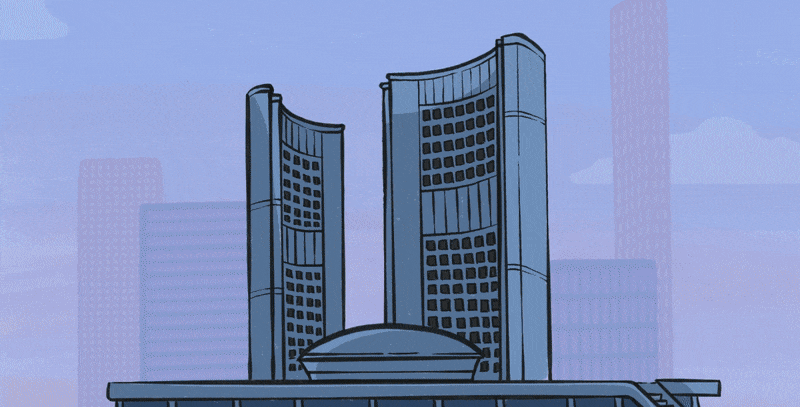
Bonnie Casmey, a longtime St. James Town resident, witnessed this denial in one of her closest friends, right until the end of his life. Ray Hatley—lovingly known as Daddy Ray to residents of their neighbourhood—was known for his generosity, and was like a grandfather to Casmey. He used to take care of her daughter while she was at work and spend holidays with her. She’d see him every day.
Nearly fifteen years into their friendship, in the early 2010s, Hatley—then in his 80s—started being visited by people he’d call his “nieces and nephews.” Casmey knew these weren’t his blood relatives. They started by asking favours and borrowing money; then, after a year, they moved into his TCH home. Hatley started pushing away his friends and community members, stopped coming over, became avoidant when he was spotted at one of the local bars, making hasty exits. He was getting so many complaints from his neighbours, of noise, of people coming in and out of his apartment at all hours, that he risked being evicted. But in all that time, he denied that anything was wrong. “I know he was scared, but he didn’t want to admit it,” Casmey says.
At the heart of Hatley’s story was loneliness. “Ray always wanted to be needed,” Casmey says. Until the end of his life, whenever she would gently try to address the issue, Hatley would downplay it, saying, “They’re just staying a week until they get their stuff together.” No-one knew how to intervene if Hatley didn’t acknowledge there was a problem. Towards the end, Casmey would only see him once or twice a week, and never with the familial intimacy that existed between them before—he’d disappeared into himself. He died in 2014, a couple of years into the takeover.
Today, the hope is that someone at TCH would flag that Hatley’s home was being taken over—staff have been given the training, told to look out for the warning signs. Once TCH staff have been made aware of a potentially unsafe living situation, they’ll often use the guise of a routine inspection, like smoke alarm testing, to check in on the resident and inspect the unit. They’ll devise ways to make it seem like they discovered the takeover themselves, and inconspicuously speak to the resident alone. Their aim is a consent-based model of intervention, where they take action on the tenant’s terms, to clear the unit—or, in cases of violent takeovers, relocate the resident to emergency housing—and create follow-up plans with partner services in the community so it doesn’t happen again. If deemed necessary, or requested by the tenant, law enforcement gets involved, and charges can be laid where a crime has been committed. But by their own admission, TCH staff can’t be everywhere all the time.
Tracy Rousselle, a 49-year-old TCH resident, described experiencing a violent takeover a year and a half ago that unfolded over six months, in which the people taking over her home to make and sell drugs would restrain her and physically intimidate her to keep her from reporting what was unfolding. When Tracy told TCH staff, they removed the perpetrators from the unit and changed the locks, only for them to come back in a matter of days.
“I would go tell the guards I need help. And they would get rid of them,” she says. “Kick them out, lock the door, change the locks, and see if it would work…it didn’t.”
Though her support workers knew the situation was unfolding, the lack of readily available emergency housing meant it took them months to move her into new accommodation on the other side of the city. It was only after a friend of six years visited the apartment and died of an overdose that they moved her. (TCH told The Local that one of the greatest barriers to emergency housing is the lack of available, appropriate vacant units.) Tracy is grateful to the staff that she’s out and safe now, but she also feels it should’ve been faster. “It took somebody to die in my apartment to help me,” she said. “It hurt me so bad.”
Sarah fears there are a lot more cases out there, going unnoticed. “It’s been going on for years and years and years. And nobody’s really done anything about it […] it’s like pulling teeth.” she says.
“The average person, who isn’t at great risk of experiencing a takeover, generally doesn’t know they exist. Their boundaries are blurry, circumstances often fluid, starting off innocuous and turning ugly, sometimes with no clear villain.”
And what happens in housing with fewer supports than TCH? The city has a small army’s worth of staff who are already working over-capacity, but other supportive housing environments often have far fewer resources at their disposal. In private low-income housing, there’s no one to watch out for tenants but each other. Both Sarah and Casmey live in accommodations where they suspect their neighbours have experienced takeovers in the past, and haven’t quite known who to turn to for help. (TCH recommends CrimeStoppers for those living outside TCH, and their in-house client care line for TCH residents.)
Putting a name to the crisis is the first step, and that’s only really happening now. But addressing this social ill involves addressing every root cause simultaneously, in a city where housing is growing more unaffordable by the day, social services are being cut, and the pandemic has deepened isolation in the city’s most marginalized communities. Unless addressed head-on, takeovers thrive in an environment like this.
“It’s about finding a way […], with everybody in your community, to try and take back the community. But people can’t do that without help,” says Sarah. “The system can’t be apathetic.”
Our Rent Series is made possible through the generous support of Maytree. All stories were produced independently by The Local.
